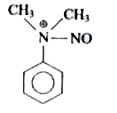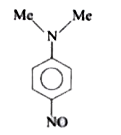A
B
C
D
Text Solution
AI Generated Solution
The correct Answer is:
|
Topper's Solved these Questions
ORGANIC COMPOUNDS WITH FUNCTIONAL GROUP
CENGAGE CHEMISTRY ENGLISH|Exercise Exercises Assertion And Reasoning|9 VideosView PlaylistORGANIC COMPOUNDS WITH FUNCTIONAL GROUP
CENGAGE CHEMISTRY ENGLISH|Exercise Archives Single Correct|10 VideosView PlaylistORGANIC COMPOUNDS WITH FUNCTIONAL GROUP
CENGAGE CHEMISTRY ENGLISH|Exercise Exercises Multiple Correct|18 VideosView PlaylistNUCLEAR CHEMISTRY
CENGAGE CHEMISTRY ENGLISH|Exercise Archives Subjective|13 VideosView PlaylistP-BLOCK GROUP 15 ELEMENTS - THE NITROGEN FAMILY
CENGAGE CHEMISTRY ENGLISH|Exercise Exercises Archives (Subjective)|28 VideosView Playlist
Similar Questions
Explore conceptually related problems
Knowledge Check
A
B
C
D
Submit
Similar Questions
Explore conceptually related problems
CENGAGE CHEMISTRY ENGLISH-ORGANIC COMPOUNDS WITH FUNCTIONAL GROUP-Exercises Single Correct
- Which of the following is formed when RNH2 reacts with RCHO?
02:01
|
Play - Which of the following represents the poinsonous gas which caused the ...
01:33
|
Play - The conjugate base of (CH3) NH2^(o+) is :
01:18
|
Play - Which of the following is the weakest base ?
03:45
|
Play - Which of the following reaction does not yield amine?
02:21
|
Play - Primary and secondary amines are distinguished by :
01:34
|
Play - Indicate which nitrogen compound amongst the following would undergo H...
02:41
|
Play - Pick up the correct stament :
04:48
|
Play - The producet of the reaction of alcoholic silver nitrite with ethyl br...
01:08
|
Play - The electrolytic reduction of nitrobenzene in strongly acidic medium p...
01:57
|
Play - Azoxybenzene can be obtained by the treatment of mitro-benzene with :
01:23
|
Play - Tertiary nitro compounds cannot show tautomerism becauses :
02:41
|
Play - Diazo coupling is useful to prepare some
03:09
|
Play - The following reaction constituts : RNH2 + S=C=S overset (HgCl2) (r...
02:32
|
Play - Primary , secondary , tertiary amines can be separated by the followin...
03:02
|
Play - When C6 H5N2Cl is reduced with Na 2 SnOO2, the product is :
01:06
|
Play - Nitrogen is likely to be evolved when NaNO2 in dilute HCl warmed with...
02:33
|
Playing Now - A compound X has the molecular formula C(7)H(7)NO. On treatment with B...
05:25
|
Play - A compound (X) has the molecular formula C3 H7 NO . With Br2 and KO...
03:42
|
Play - An amine on treatment with HNO2 evolved N2 The amine on exhaustive me...
03:19
|
Play



